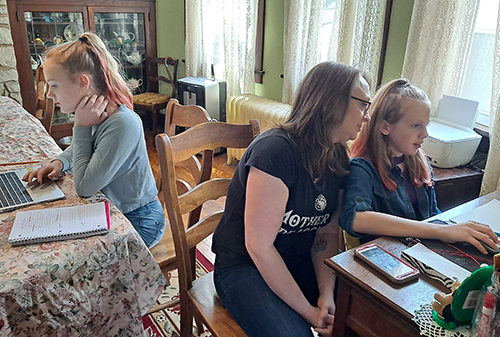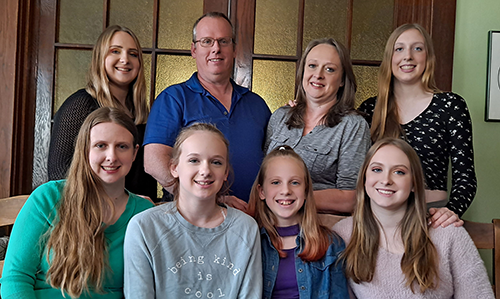Commentary
My Child Was Saved by School Choice
In April, Sharon Sedlar testified before the Pennsylvania Senate Education Committee, sharing her families’ story of school choice, and how cyber charter schools changed her daughter’s educational trajectory. This is an excerpt from her testimony.
I have lived in Brentwood Borough, Allegheny County, for 18 years and have had six children in Brentwood Borough School District. I have been an active participant in my school community and have experienced public, brick-and-mortar district schooling as well as district-offered cyber-schooling and cyber charter schooling outside of the district for my children.
My children had wonderful opportunities and teachers for years in the brick-and-mortar district elementary school, but about six years ago, things began to change. Classrooms became overcrowded and improperly controlled. My child, a happy and bouncy third-grader, started to have abdominal migraines and dreaded going to school due to a chaotic classroom environment. Over the next two years, things improved but were never completely resolved.
Then, another one of my children began to have similar symptoms. My second-grade daughter no longer wanted to attend school, but I felt I had no choice. After a few months, a Student Assistance Program Plan was agreed upon but wasn’t successful. Her condition further degraded, and she refused to attend school. Debilitating symptoms of anxiety surfaced at any suggestion of going back into a physical school setting. She had tried for six months to do as she was asked—as did I—but the district’s efforts were unsuccessful.
My daughter then attended a cyber charter school, and in fourth grade, she participated in our district’s asynchronous cyber program. Being such a small school district, however, resources were very limited and competition for those resources was high. For this and multiple other reasons, the district-provided cyber program was grossly substandard. No teacher or peer interaction was provided. I constantly requested confirmation that the cyber curriculum aligned with the district curriculum, as I was trying to establish a baseline of her instruction for the time when she would hopefully rejoin in-person school, but assistance in this area was limited due to district contractual issues. In conversations with a school official, I asked specifically if any video time with teachers was being considered. I was told that the perception was “That’s what in-person school is for … and we already offer that.”

When COVID hit last year, I knew that my school district would not be able to provide its instructional services in a manner acceptable to me. I searched for an alternative program that was a blend of synchronous and asynchronous classes—one that didn’t tie my children to the computer screen all day but that also provided depth of curriculum, structure, electives, and teacher/peer interaction. I found what has been the perfect solution in Pennsylvania Leadership Charter School (PALCS).
One very noticeable difference at PALCS is in the level of communication and access to student information, feedback, and grades. It already has in place the infrastructure necessary to promote effective and timely communication between administrators, parents, peers, teachers, and students. Requesting a teacher’s conference for parents or special lesson help is easily accomplished. The response time to emails is usually within an hour or two, if not within minutes.
I am so very glad that I had a need to examine other options. As a result, my children are happier, more challenged academically, and have been offered courses not previously possible in district schools. Because of our ability to choose schools, PALCS has provided us with the ability to grow closer as a family, and as such, our closely held values can be better supported and maintained.

Our cyber charter school experience has inspired a love of learning for a very young child who was paralyzed by the prospect of any teacher interaction and dreaded the thought of stepping foot on school grounds without her mother. The school district environment caused these problems, but hard work, cyber schooling, and the support of PALCS is repairing it. My daughter is now open to attending school in-person in high school. What a huge step for her! This is further proof that the ability to make an educational choice is crucial for families, and children can be saved by the parents selecting the educational program they feel is right for their child.
PALCS has earned my trust and works hard to earn its funding for its students. I hope legislators will continue to support these schools, allow my children this refuge, and give parents the ability to choose what is best for them.